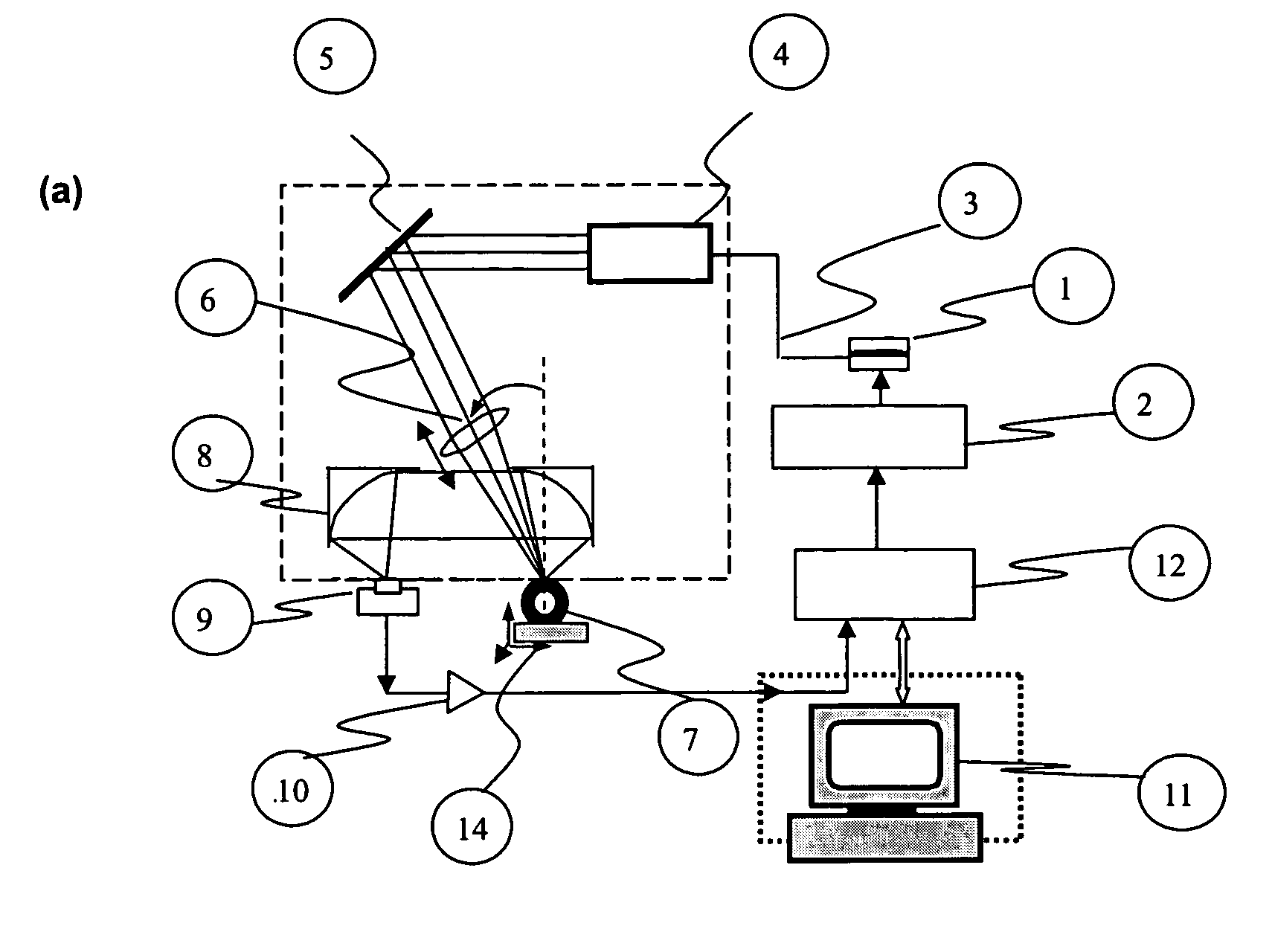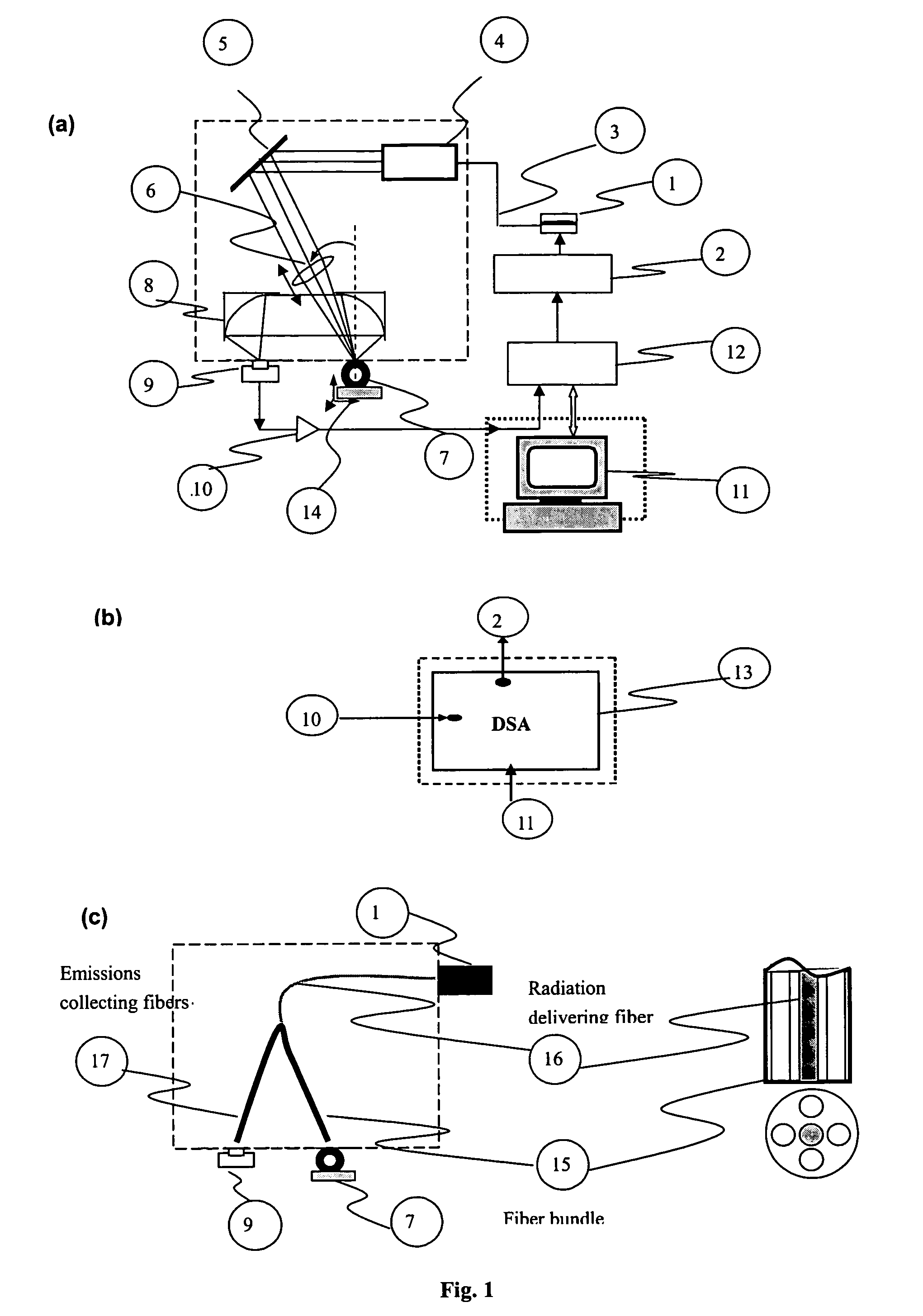Non-contact method and apparatus for hardness case depth monitoring
a non-contact, hardness case technology, applied in the direction of instruments, weather/light/corrosion resistance, optical radiation measurement, etc., can solve the problem of not being suitable for industrial on-line volume inspection
- Summary
- Abstract
- Description
- Claims
- Application Information
AI Technical Summary
Benefits of technology
Problems solved by technology
Method used
Image
Examples
third embodiment
[0028]A schematic diagram of possible embodiments of an instrument for hardness case depth monitoring is shown in FIGS. 1a, 1b, and 1c. The excitation source is a high power semiconductor laser 1 capable of heating the material under examination. The laser power output was modulated by using a current driver 2 controlled by a personal computer 11 resulting in a harmonic energy source or beam 3 that is directed using an expander 4 a mirror 5 and lens 6 onto the sample 7. The beam was focused or expanded depending on the measurement scheme, and then impinged onto the surface of the sample with a spot size between 1 and 22 mm by adjusting the position of the converging lens 6. A pair of off-axis paraboloidal mirrors, 8 are aligned with the focal point coincident with that of the laser beam and used to collect emitted IR photons from the sample. The collected IR emissions are focused onto a detector 9 after being passed through a filter that allows Planck-mediated thermal infrared emiss...
PUM
| Property | Measurement | Unit |
|---|---|---|
| frequency | aaaaa | aaaaa |
| size | aaaaa | aaaaa |
| spot size | aaaaa | aaaaa |
Abstract
Description
Claims
Application Information
 Login to View More
Login to View More - R&D
- Intellectual Property
- Life Sciences
- Materials
- Tech Scout
- Unparalleled Data Quality
- Higher Quality Content
- 60% Fewer Hallucinations
Browse by: Latest US Patents, China's latest patents, Technical Efficacy Thesaurus, Application Domain, Technology Topic, Popular Technical Reports.
© 2025 PatSnap. All rights reserved.Legal|Privacy policy|Modern Slavery Act Transparency Statement|Sitemap|About US| Contact US: help@patsnap.com



